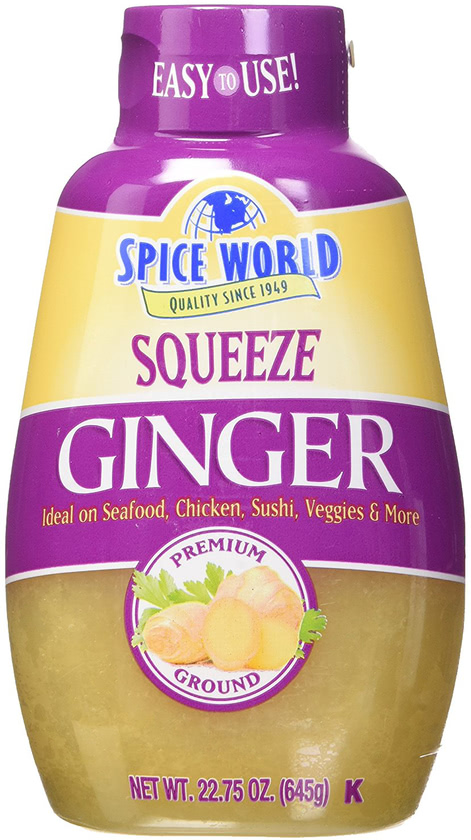The limits of AI...
“Alexa, play ‘My Freeze Ray’.”
"'My Freeze Ray', by Various Artists."
…
“Alexa, play the next song.”
"What do you want to play?"
“The next song from that album.”
What would you like to play next?"
“The rest of that album.”
"What do you want to play?"
“Forget about it.”
(all Hue lights in the house come on at full brightness)
Aw, c'mon!
Seriously, Samsung? I pay three grand for a new fridge and I can’t put magnets on the door? Who doesn’t use fridge magnets?
No, really, 'I can quit any time'

Cherry-picking
Several years ago, the personally-owned MacBook Pro (Togetsukyō) that I used for work went flaky, and I didn’t feel like spending the three grand or so that it would take to buy a fully-tricked-out replacement. So I had my boss buy me the best he could get approved, which was the 13-inch model with 16 GB of RAM and a 512GB SSD. I named it Hello!Party, inspired by Scott’s ‘favorite’ song, and carefully downsized onto the smaller SSD.
It served me well for three years, but around the same time AppleCare gave out, so did the right-side USB port. So he ordered me a new one, and the approval process didn’t require so many compromises, so I ended up with the 15-inch touchbar model with 16 GB and a 1 TB SSD, which I named Macchi: it’s not headless, but it’s formidably proportioned. Apart from the mind-bogglingly terrible keyboard and the mostly-just-annoying touchbar, it’s a spiffy thing, and the extra space gives plenty of room for VMware Fusion virtuals.
But there was a problem: a bunch of data from Tog never fit onto H!P, and was only available in an archive on the house server, a refurbished Mini named Melwin. I’d also decided to keep a cleaner separation between work and home, so I had two accounts on H!P, one with all my work stuff, one with personal email, iTunes, Yojimbo, etc. For more fun, H!P was bound to our AD domain, so the work account had funky permissions. For even more fun, when I got Macchi, I only moved the work account, so I had to carry H!P if I wanted access to personal stuff.
Ten days ago, I noticed that Apple’s refurbished store had just gotten a new batch of 12-inch MacBooks in stock, which seemed like the perfect opportunity to clean up my personal/work accounts once and for all. Buying refurbs directly from Apple is actually the best way to get a reliable machine with a full warranty, as clearly explained by the folks at MacRumors. Brand new hardware is a crap shoot (especially models released in the past 3-4 months), and no one else’s refurbs are eligible for AppleCare. It’s got a Core i7, 16 GB of RAM, and a 512GB SSD, and I kept the name Hello!Party.
TL/DR, I’ve spent the last three days figuring out how to merge the best bits from multiple accounts on three machines to create a fully-populated personal account where everything actually works and has the correct ownership, while stripping out the last of the personal stuff from the current work machine.
(well, the naughty personal stuff, for sure; unlike most of the people who certified that they’d read the employee handbook this year, I actually read the employee handbook…)
Side note: after I scrubbed and reinstalled the 13-inch MBP, the right-side USB port seems to work again. Sigh.
More fun than one man can handle...
Sometime this morning, someone rebooted a KVM server. We don’t know who, yet, but this would only have been a minor problem if it weren’t for the fact that another unknown someone had accidentally deleted the disk images for some of the VMs running on that server.
A month ago. No one noticed because they kept running on the unlinked open files…
Daily full backups are your friend!
Update
NetworkManager: threat or menace?
Seriously, who even configures a server with it, and who came up with the idea of instantly taking down the interfaces the moment you save ifcfg-eth0 to switch from NM to static config? Fortunately, IPMI meant that I didn’t have to physically plug a monitor into the server to get back in.
(although Neal did have to plug in the IPMI interface for me; the perils of setting up new servers in a hurry…)
Dear Apple,
So, what exactly is the point of reporting 2^63 - N as the number of
free inodes in df output on a Mac? You could at least abbreviate
this nonsense in scientific notation, if you can’t report a meaningful
number.
Oh, right, 'resource forks'
The last bit of work involved in merging all my personal Mac files back together on the new 12-inch MacBook was FontExplorer X and all of my fonts. For the past few years, I just grabbed a few at a time from the old machine when I needed them (first and foremost being my improved version of Anonymous Pro for Terminal use), but it was time to get them all back.
Except that when I was done, there weren’t as many as there should have been. I opened up a few old Illustrator files, and got warnings about missing fonts.
Why? Because old Mac font suitcases were stored in the magic Mac resource fork, and somewhere in the various iterations of copying the font directories around, I lost all the resource forks, leaving a bunch of zero-length files. Fortunately, I not only made a disk image of the old Togetsukyō disk, I still had the actual disk on a shelf, right next to the two full backups I made with SuperDuper! when I pulled it from the dead machine.
After that, it was trivial to merge over only the files that were
zero-length on the new disk. cp handles resource forks just fine, so
I massaged the output of find into a quick shell script, and all was
well.
Side note: I have way too many fonts, and that’s not even counting the old shovelware CDs that came with CorelDRAW! back in the day (including the early one they got their asses sued off over).
Oh, dear, I found more fonts…
Just remembered that I saw a Fonts directory on one of the really old external drives I copied to my new NAS. When I opened it, I found another gigabyte of old fonts. This one does include the old CD4 fonts, plus my old Type On Call purchases and everything that was bundled with Illustrator 7 and 9. I’m sure there’s a lot of overlap with what I’ve already got loaded, but best to be sure.
Okay, I don’t need those fonts…
The CorelDRAW 4 fonts have some novelty value (this was the set of Bitstream fonts they licensed after the pirated fonts in CD3 got them sued), but the 26-year-old font archive that predates my arrival in California looks like a steaming heap of shovelware. I don’t even remember where they came from originally, and I already have the DynaCom shovelware CD if I wanted ripoff fonts without decent kerning tables.
And I’ll just delete the disk image labeled “Font Folio 8”. However I acquired it back in the Nineties, it wasn’t by purchasing the product personally, and I can get legit modern versions of pretty much everything on it from Typekit as part of my Adobe Creative Cloud subscription. (besides, it’s more resource-fork suitcase fonts…)
Dear Wordscapes,
I don’t understand why you’re not accepting this 7-letter word…

3D Cheesecake 2
Consolidating all my files onto the new NAS led me to find a variety of non-animated cheesecake. I don’t have names for all of these, but I’ll fill them in as I come across them.

The Penguin is a Harsh Ebook
Apparently the rights have finally been sorted out, and last week Penguin released Heinlein’s The Moon Is A Harsh Mistress for Kindle. TANSTAAFL applies, but they kept it under $10.
Dear Adobe,
I just got email touting the new “Adobe XD CC” app, which promises:
“The future of experience design. No experience required.”
This sounds like exactly what happened when Apple set fire to their
decades of usability studies and sucked on a pistol Boldly
Invented New Paradigms.
Dear baking bloggers,
When discussing the Japanese dough-making method popularized by Taiwanese cookbook author Yvonne Chen, please do not write things like “In Japanese, tangzhong means either a warm or thin starchy (flour-based) starter”.
No, it doesn’t. In Japanese, “tangzhong” doesn’t mean anything at all, because the word 湯種 is pronounced “yudane” (and literally reads “hot water seed”). Anything you read or write about tangzhong is based on a Chinese cookbook that adapted a Japanese technique. If you want to call something “Hokkaido Milk Bread”, don’t describe it using Chinese words.
To find specifically-Japanese breads and recipes, search for “湯だね食パン” or “湯種食パン”.
Update
So it looks like it all traces back to blogger and cookbook author Christine Ho, who introduced tangzhong to English-speaking audiences early in 2010, and has published a number of additional recipes, including the one that everyone copied, Hokkaido Milk Toast.
The Chinese name for Chen’s recipe, 北海道牛奶麵包, is indeed “Hokkaido Milk Bread”. It looks like Ho eventually settled on “water roux” as the translation for 湯種, but she’s quite clear that this is a popular Chinese method based on an apparently-patented technique developed in Japan.
Amusingly, the commercial bakery who owns the patent is headquartered in Nagoya, and doesn’t have a big presence in Hokkaido. In other words, it’s possible that neither tangzhong nor yudane is how Hokkaido-style bread is actually made in Hokkaido…
Updated Update (5/19)
I haven’t found a Japanese reference that predates Chen’s book, so unless I stumble across the patent, I’m going to assume that she coined the name 湯種.
After reviewing a number of recipes, I’m convinced that the commercial Japanese method was quite different, and Chen deserves the credit for making it faster and more convenient. Japanese recipes for yudane bread may use either, but tangzhong bread almost always uses Chen’s method.
For instance, this Japanese recipe from a flour company has you mix 100 grams of bread flour with 73 grams of 90°C water, wrap it tightly, and let it rest for 10 hours in the fridge.
This recipe makes the starter a bit differently, having you mix 50 grams of flour, 5 grams of sugar, 5 grams of salt, and 100 grams of boiling water, wrap it tightly, and let it rest in the fridge for 12 hours.
Compare to Yippee’s recipe based on Chen’s book (which predates Ho’s version, but doesn’t seem to have been the (coughcough) starter for the trend in English-speaking baking), which uses a 5:1 ratio of water to flour, and cooks it to 65°C, either on the stovetop or in the microwave (about 90 seconds either way). Where most recipes subtract the tangzhong amounts from the total used for the bread, this one makes enough for two loaves, with instructions on saving the rest for later. Her primary change to Chen’s recipe is adding a sponge.
Now for some fun! Here’s a Japanese translation of an english-speaking Egyptian’s version of King Arthur Flour’s adaptation of Chen’s method, applied to Japanese-style dinner rolls.
I haven’t tried the overnight yudane method, but this morning I made the King Arthur classic sandwich bread using the 6:1 (when converted from volume to weight) tangzhong option in the notes, which cooks it on the stovetop. It’s almost all gone now, so you could call it a success.
(the recipe worked perfectly in my Zojirushi Virtuoso bread machine, by the way, which I bought recently when my old Oster got a little flaky. Since by default it has a 30-minute rest period at the start, I didn’t even bother to cool the tangzhong to room temperature; I just put it in the bottom of the pan with the other liquid ingredients, poured the dry stuff on top, and made a well for the yeast, as usual)
I had odd flashbacks to my childhood, though, because the last time I cooked flour and water into a paste on the stovetop, I was making papier-mâché.
Oh, and the folks at America’s Test Kitchen included their take on Japanese Milk Bread in their book Bread Illustrated, using the same tangzhong ratio as King Arthur Flour. Theirs adds an egg for more richness.
Kiki at 17
Missed this when it came out last year.
Dear Monterey Bay Community Power,
A hearty “fuck you” to the people who decided it was acceptable to auto-enroll everyone into a scammy “green” energy plan, with the opt-out instructions printed in tinyfonts on the back of a postcard designed to be thrown away unread.
Bonus for charging people to opt out if they fail to read the postcard and don’t notice until they get their new bill (assuming they don’t pitch that, too, since it’s not from a company they knowingly do business with).
Tangzhong dinner rolls
As part of the ongoing upgrades at home, I just replaced all my baking pans with the ones King Arthur Flour sells, and picked up a bunch of their nice parchment sheets as well. While I was at it, I saw that they had a recipe bundle for their version of the tangzhong ‘Hokkaido’ milk bread rolls.
Everything arrived yesterday, and I made a batch this morning, following their recipe, weighing the flour instead of using volume measurements for it. I used the bread machine to make the dough, then baked them in the supplied pan.
Was it good? Half the rolls didn’t survive long enough to cool down; I made little roast beef sandwiches out of two, and just ate the other two while catching up on email. Lunch just now was another little sandwich, since I stopped at the Morgan Hill Safeway on the way to the office (the closest one that has a Boar’s Head deli).
If I were having friends over, I’d have to make a double batch (at least!), which means pulling out the stand mixer.
Only negative? The recipe bundle promised a nice printed copy of the recipe. What arrived was a piece of cheap printer paper stapled to the receipt, printed in a small, thin font. Printing a copy yourself produces something far more useful for actually baking (in addition to giving you the option to use weight rather than volume).
What's in a name?
Shouldn’t these be called naanites?

Attract Mode
Because Sony is run by morons, this video embed may not work outside of Japan (even though the song is available from US iTunes…).
In fact, Google and Youtube search won’t even show you the link to it, so you may have to fall back to sketchy video sites (1, 2), unless you use a geoblock-evading VPN service (I use HideMyAss).
Note that it’s Ai Shinozaki, who’s NSFW unless you bury her neck-deep in whipped cream.
Wonder what brought that song to mind...
“Alexa, play songs by Ai Shinozaki.”
"Shuffling songs by Usher."
“Alexa, stop. Play ILBTs by Joe Walsh.”
"Playing ILBTs by Joe Walsh."
Dear Hello!Project Costume Designers,
I’m pretty sure there’s nothing Egyptian about these costumes, despite their use in your new stage show “Pharaoh’s Tomb”.


